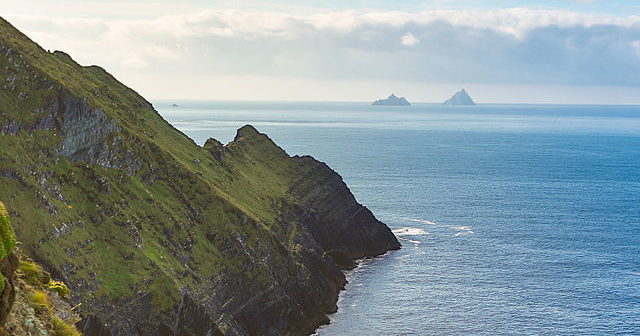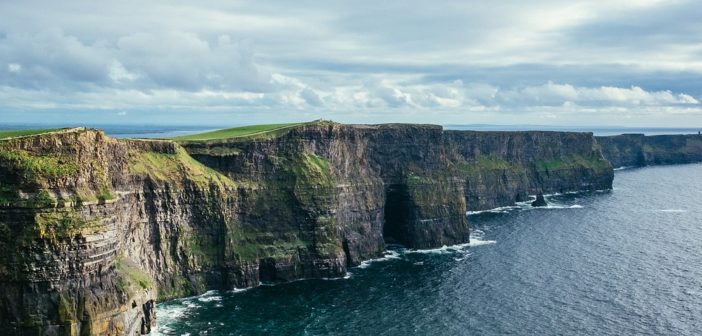Top 10 Reasons To Visit Ireland
Ireland has over 80 million diaspora worldwide. We can’t go anywhere without hearing “Oh my God! I’M Irish too,” followed closely by, “I’ve always wanted to go to Ireland but I never have”. Recently, I’ve managed to convince some people I’ve met abroad to come to the famed Emerald Isle, and now I want to provide you with some of what I believe to be the best reasons to come visit my native land
.
10. National Leprechaun Museum (Músaem Náisiúnta na Leipreacháin)
Yes, you read that correctly. In Dublin City centre, we have a museum devoted entirely to leprechauns. Being a self-respecting Irishman myself, I have, of course, never been to this establishment, and was mortified when I read it was opening. But we’re all tourists somewhere, and the same way I’m sure every New Yorker sighs each time an out-of-town visitor asks to go see Central Park, The Statue of Liberty, The Empire State Building, etc., I know that this is a huge attraction for North Americans of Irish heritage. Featuring pots o’ gold and rooms filled with giant furniture to make you feel like a leprechaun, it would be a shame to travel to Ireland and not stop in. At least ironically.
9. Gaeltachts (Irish-Speaking Areas)
Some people think we only speak English in Ireland. Others think we don’t speak English at all. Some think our language is called “Gaelic” (it’s not, nor is Gaelic any one language at all). One person I met even thought that, by saying I can speak Irish, I meant that I speak English with an Irish accent.
The truth is, for the majority of us, English is our first language. But over a quarter of the population is fluent in Irish, and Gaeltachts are designated areas, protected by the Government, that live life through Irish on a day-to-day basis. These are mostly on the west coast, as this was where Irish families were forced when Cromwell invaded from Britain. The reason I have the English in parentheses is because nobody refers to them by anything other than “Gaeltacht”.
For an example of the Irish Language (called Gaeilge), watch this weather report.
And here are some written pronunciations to give you an idea of how unlike English it really is:
Glendalough (“Glen da lock”)
Ranelagh (“Wren a la”)
Dun Laoghaire (“Done Leary”)
Saibhne ó Gríobhthá (“Sev nah Oh Gree Oh Faw”)
8. The Skellig Islands (Na Scealaga)

Ring of Kerry Kerry’s Most Spectacular Cliffs and the Skellig Islands
The Skellig Islands are two small Islands off the coast of Country Kerry, in the Southwest of Ireland. The islands are famous for a number of reasons, one of which is that they are extremely steep and jagged. The islands are located in the Atlantic Ocean, meaning the water can be extremely unstable. For this reason, the islands are only accessible when the water is calm, usually in the summer period of the year, as any boats attempting to dock in the rough water could be rising and falling as much as 30 feet.
The larger island, Great Skellig, is home to a 6th century monastery, with many of the buildings having the iconic look of resembling stone igloos. The islands are also known for the wide range of birds that can be found here, as well as seals, sharks, whales and dolphins that live in the water.
7. Newgrange (Sí an Bhrú)
One of the things that irks me most about Irish tourism is how much less well-known Newgrange is than Stonehenge. Newgrange is far more impressive architecturally, aesthetically & functionally. The site was built around 3200 BC, making it older than not only Stonehenge, but also every one of the Seven Wonders of the Ancient World. When built, Newgrange was used for many reasons, including storage, burial, and (albeit disputed) religious ceremonies.
But its most important & famous use is that the site was designed and built in such a way that, on the day of the winter solstice, the sun shines through a small opening above the entrance, and reflects off a number of quartzite passages, which illuminates the whole chamber. This is when the days of the year start to get longer, and would let the people know that it is time to start a new harvest year. This feat is simulated for tourists throughout the year. Newgrange was lost for about 4,000 years, and rediscovered in the 17th century.
6. Guinness Storehouse (Stóras Guinness)
Most of you will be familiar with Guinness. It’s the most famous Irish drink, and we’re recognised for both it, and its record book, the world over. But here are a few things most of you probably don’t know about our native stout, and the story surrounding it. It was first made in 1759, making it 253 years old. In 2009, the Guinness corporation celebrated the first “Arthur’s Day”, to commemorate Arthur Guinness. The holiday quickly caught on, with the tradition being to raise your pint at 17:59 on September 23rd, and toast “To Arthur”.
But one of the most unique things about the Guinness storehouse is that Arthur Guinness leased the site for 9,000 years, for a moderate fee of £45. Another thing most people don’t know, which can be very annoying for Irish people ordering the drink abroad, is that the drink is supposed to be poured from tap until the glass is 3/4s full, left to settle, and then topped up off. The storehouse itself is a great place to tour, taking you around and showing you how the drink is made, finishing with a trip to a circular bar with a 360° of Dublin City, where you pour your own pint.
5. Giants Causeway (Clochán na bh Fomhórach)

Although this is located in Northern Ireland, which is currently a separate country and part of the United Kingdom, it is still on the Island of Ireland, and is a part of Native Irish folklore. The Giants Causeway is another one of the Seven Natural Wonders of Ireland. It’s an incredible area created by a volcanic eruption where the lava cooled almost instantly, leaving about 40,000, mostly hexagonal, columns. The area derives its name from an old Irish legend, in which a warrior named Fionn MacCumhaill built the columns so that giants could step over to Scotland without getting their feet wet, presumably because they had just bought new shoes or something. But I’m pretty sure it was really the volcano thing.
4. Book of Kells (Leabhar Cheanannais)
This book was written around the year 800, and is a Latin manuscript containing the Gospels of the New Testament, as well as a large amount of artwork. This is one of the most famous historical artifacts in Ireland because of the extremely elaborate and artistic calligraphy. Like most manuscripts from that era, the book is written on vellum (calf skin), and was written by monks. Its most iconic feature is that the first letter of each page is the biggest and most elaborate on that page, taking up a large chunk of the top left. And of course, life being as cruel as it is, one of the monks once started a new page and, upon finishing the elaborate first letter (which could take days), realised he’d done the wrong one.
The Book is housed in Trinity College, Ireland’s oldest University, and (obviously) kept in protective casing. However, they only turn one page per day out of the 340 remaining, so if you want to see the whole thing, you’ll have to move here for about a year.
3. Connemara (Conamara)
Connemara is another area on the coast of the Atlantic, although the region itself is not properly defined. The location is world-famous for its marble, although that’s not why I’m including it in this list (seriously, Ireland’s not THAT boring). No, the reason I’ve included Connemara in my top ten is because it’s one of the best places to go in the country if you’re looking to hike or take part in watersports. There are plenty of lakes and rivers that are among the most popular places to fish, kayak, etc., and the landscape is one of the most beautiful in the country. The landscape is so famous, that part of one of Jupiter’s moons (Europa) is named after it.
2. Oxegen
Although not taking place this year, Oxegen is an annual music festival that takes place every summer. Now I know every country has its music festivals but, since starting up in 2004, Oxegen has shot its way up to being widely regarded as one of the best music festivals in the world. In 2011, it won Best Line-Up at the European Festival Awards. More than 80,000 people attend Oxegen, and the line-up frequently includes a wide variety of acts, with artists such as Beyoncé, Muse, Eminem, Black Eyed Peas, David Guetta, The Who, and many more.
The general philosophy taken towards Oxegen is to buy the cheapest, most outrageous clothes you can find, stock up on alcohol, spend three days drunk and listening to your favorite artists, then leave with very little, and no parental-friendly, photographic evidence. Oxegen returns in July 2013.
1. Cliffs of Moher (Aillte an Mhothair)

The cliffs of Moher are listed as one of the seven natural wonders of Ireland, and are a protected Geo park. Peaking at over 700 feet tall, the cliffs range for about 8 kilometers (roughly 5 miles). The cliffs are famous not only for their height, but also for the extreme weather it experiences, brought in by the Atlantic.
Many of you will actually have seen an example of this already. The cliffs are featured in Harry Potter and The Half Blood Prince, in the scene where Dumbledore and Harry go to the cave where Voldemort has hidden the locket. Because of the weather, the ten-second shot took three weeks to film. Watch the scene, and you can see why this is such a tourist hotspot and, scarily enough, one of the most popular places in the country to surf.



No comments:
Post a Comment